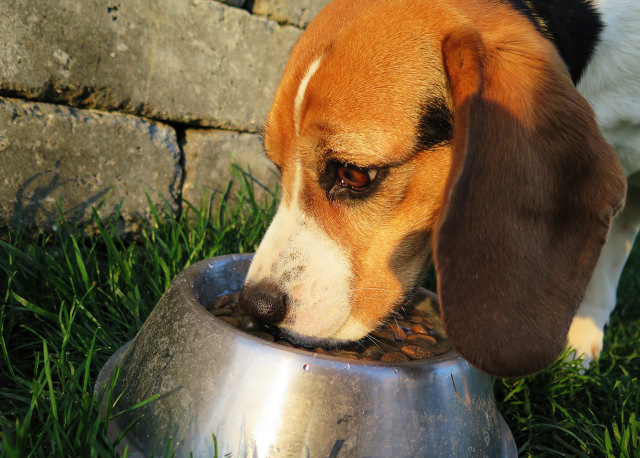As a precious member of your family, it’s no surprise that you want to feed your dog the best dog food available for their health and well-being. However, the dozens of choices available with their varying ingredients lists can make the process of choosing an appropriate dog food very confusing. Here are some factors to consider when choosing the best option for your pup.
Facts about Dog Food Recalls and Manufacturing Methods
Choosing a safe dog food is probably the number one thing that pet owners consider important when making their choice. Unfortunately, it’s also one of the hardest things for dog food manufacturers to prove and to prove consistently. Manufacturing methods governing animal foods just aren’t as stringently governed as those protecting the food we eat as humans. Since the massive recalls of Chinese-manufactured dog foods back in 2007, many dog owners are taking a more serious stance on choosing safe and healthy dog foods.
The Association of American Feed Control Officials sets and maintains safety standards regarding the manufacturing of dog food. However, the FDA determines the quality of specific ingredients and the FDA does not guarantee that all ingredients are safe. Therefore, it is always best to avoid all dog foods that obtain ingredients from rendering plants. These can be listed as meat by-products, meat meal, or dry rendered tankage. These ingredients can be anything from road kill to discarded packaged meat that is past its expiration date.
Factors to Consider When Choosing a Dog Food
Unfortunately, dog food manufacturing standards are not anywhere near as strict as the standards that apply to human food manufacturing. While this is good for us, it can mean bad news for Fido. Although nearly all brands of dog food promote themselves as the best with a long list of benefits for your dog, this is not the case. Some dog foods contain ingredients that are questionable at the very least or downright dangerous at the worst. Keep the following factors in mind as you traverse the ever-expanding dog food aisle at your local supermarket.
Ingredients
Ingredients are the first consideration for many dog food shoppers. However, once you start reading labels, things can get very confusing. What is considered bad ingredients and what is considered good ones? Just because an ingredient has been deemed safe for consumption doesn’t necessarily mean it is health-promoting, so caution is still needed.
Some ingredients that are considered good include whole proteins from meat or eggs, whole grains, omega-3 fatty acids, organic ingredients, and fruits and vegetables. On the other hand, some ingredients that classify on the bad side include dangerous chemicals, meat by-products, unhealthy grains and fillers, ingredients from China, and potentially toxic vegetables such as onions.
Reading and understanding ingredients lists is an essential step, but remember that not all brands list everything on the label.
Type of Dog Food
Have you ever found yourself confused about whether you should choose wet or dry dog food? What about dehydrated, raw, or even homemade dog food choices? Each type of dog food has its reported benefits, but one is not necessarily superior to another.
Regarding dry food, it offers the most versatility for traveling and storage purposes. Dry food can keep for a long period of time without spoiling, and it comes ready to eat straight out of the bag. Wet food is more appealing to many dogs. For breeds with smaller teeth or those that have difficulty chewing, wet food can be a better choice. However, wet food can be less convenient simply because it can spoil much faster.
Dehydrated food is not available in all locations, but it is also an economical choice that lasts a long time. As a less processed choice, it can provide maximum nutritional benefit for your pet as well. Raw dog food is extremely nutritious, but it is the least convenient option because it must either be made or purchased on a continual basis to be served in a fresh state. If you choose to make your own homemade dog food, you have greater control over every ingredient. The drawback to homemade dog food is that is can be a time-consuming process to shop for all the ingredients and make the food on a regular basis.
Life Stage of Your Dog
As dogs go through different stages of their lives, they have different nutritional needs. Both puppies and senior dogs have specific dietary requirements directly related to their age group. For example, if large breed puppies consume too much calcium, they can develop issues with their joints. Older dogs require less protein because they are generally less active. Too much protein can stress their kidneys. Be sure to take your dog’s current life stage into consideration when choosing his food.
Breed of Your Dog
Currently, there is no scientific evidence that suggests that specific breeds of dogs have unique nutritional requirements. However, the size of your dog will alter his nutritional needs to some degree. Since breed plays an obvious role in the size of your dog, it does come into play in a roundabout way.
Which Brands Are Best?
Still not sure which brands to go with? Reviews.com evaluated thousands of dog food formulas and came up with a list of their top picks that you can check out here.


